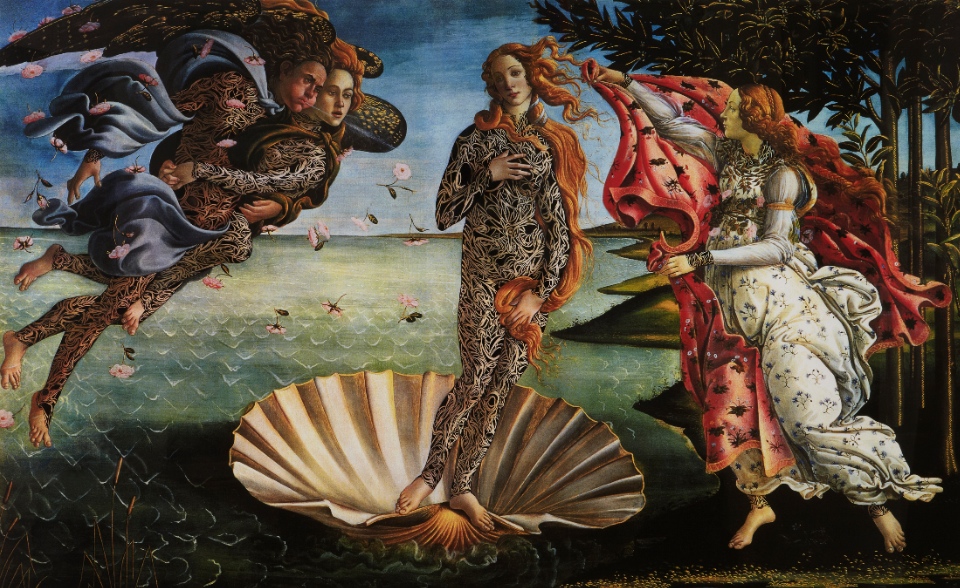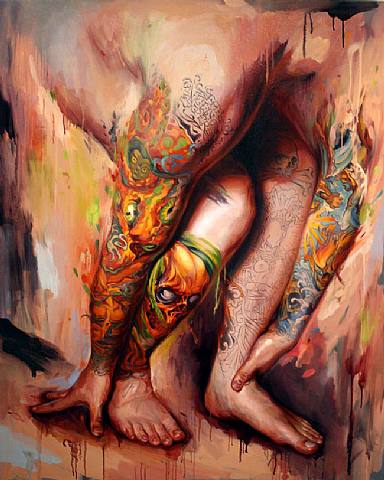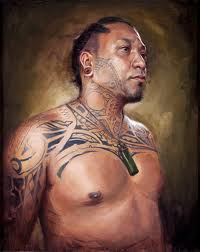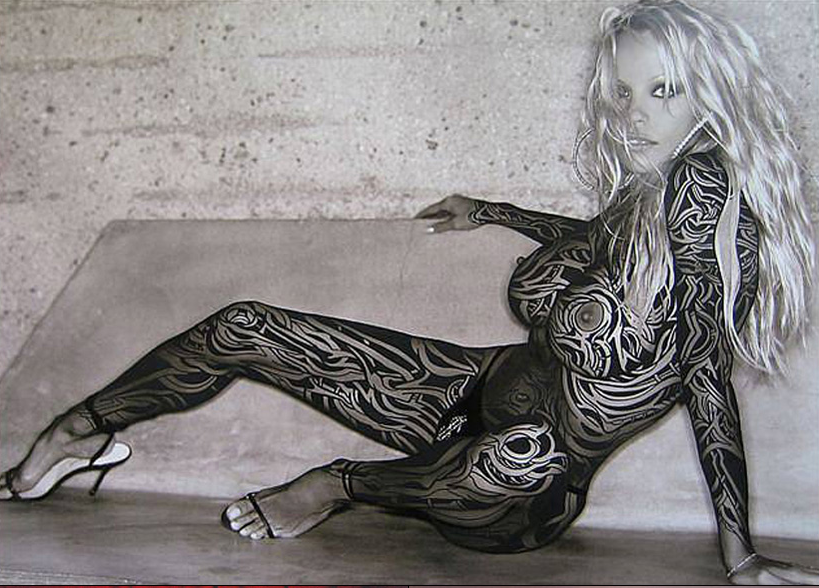Artists discover tattoo-art
It's so fashionable to be inked
Almost every day the international press runs stories about some Hollywood stars' latest tattoo: Teen heartthrob Justin Bieber just showed himself to the public with a freshly inked portrait of Jesus on his calf, Lindsay Lohan once again expressed her credo with the statement “Life without regrets” tattooed on her left wrist and actress Kirstie Alley had her children’s initials immortalized on her arm last week, live, in a TV show.
While tattoos used to be associated with jailhouse culture, they have now become socially acceptable. It is fashionable to be inked. The cliché of the tough tattooed biker has changed. Now the permanent skin-ornaments are associated rather with Angelina Jolie, David Beckham or the German Federal President's wife – she has a tribal-tattoo on her upper arm – than with anchors or crosses on brawny biceps.

But inked symbols and messages are not only popular with celebrities, the art world is beginning to deal more and more with the concept and influence of tattoos. Artists who choose tattoos as their subject are often rooted in street art, the subcultures of the graffiti-, hip-hop, rap- and skater-scene as well as the art of comics and Japanese mangas.
The Belgian artist Jean-Luc Moerman first left his urban tattoos on walls, windows and cars before he immortalized them on paper and canvas or the human skin.
Marilyn Monroe, Madonna, Cindy Crawford or President Barack Obama – born in Brussels in 1967, Moermann covered the skin of models, politicians or international jet-setters with his unique ornaments. Two entirely different worlds come together, he uses nudes by old masters such as Cranach's Lucretia as the foundation for his tattoos. The original symbolism disintegrates, a new ironic, sarcastic, socio-critical or even worshipful meaning develops. With his biomorphic patterns on the bodies of seemingly immortal historical icons he expresses the transience of symbols.

For the Mexican artist Dr. Lakra tattoo-art is about ideologies, he expresses them with symbols that he puts in a collage on mostly female bodies. He works with clippings from 1950s Mexican magazines – pin-up girls, wrestlers and advertising beauties – and distorts those idealized figures by painting bats, demons and spiders on them. Dr. Lakra's art often seems grotesque. He merges satanism with beauty mania, kitschy eroticism with science fiction.


Shawn Barber also focuses on contemporary tattoo-culture in his paintings. His subject is intimacy, the tattooed person shows himself to the observer. Barber's meticulous brush strokes and his vibrant colours express his adoration for the cult of permanent body painting.









